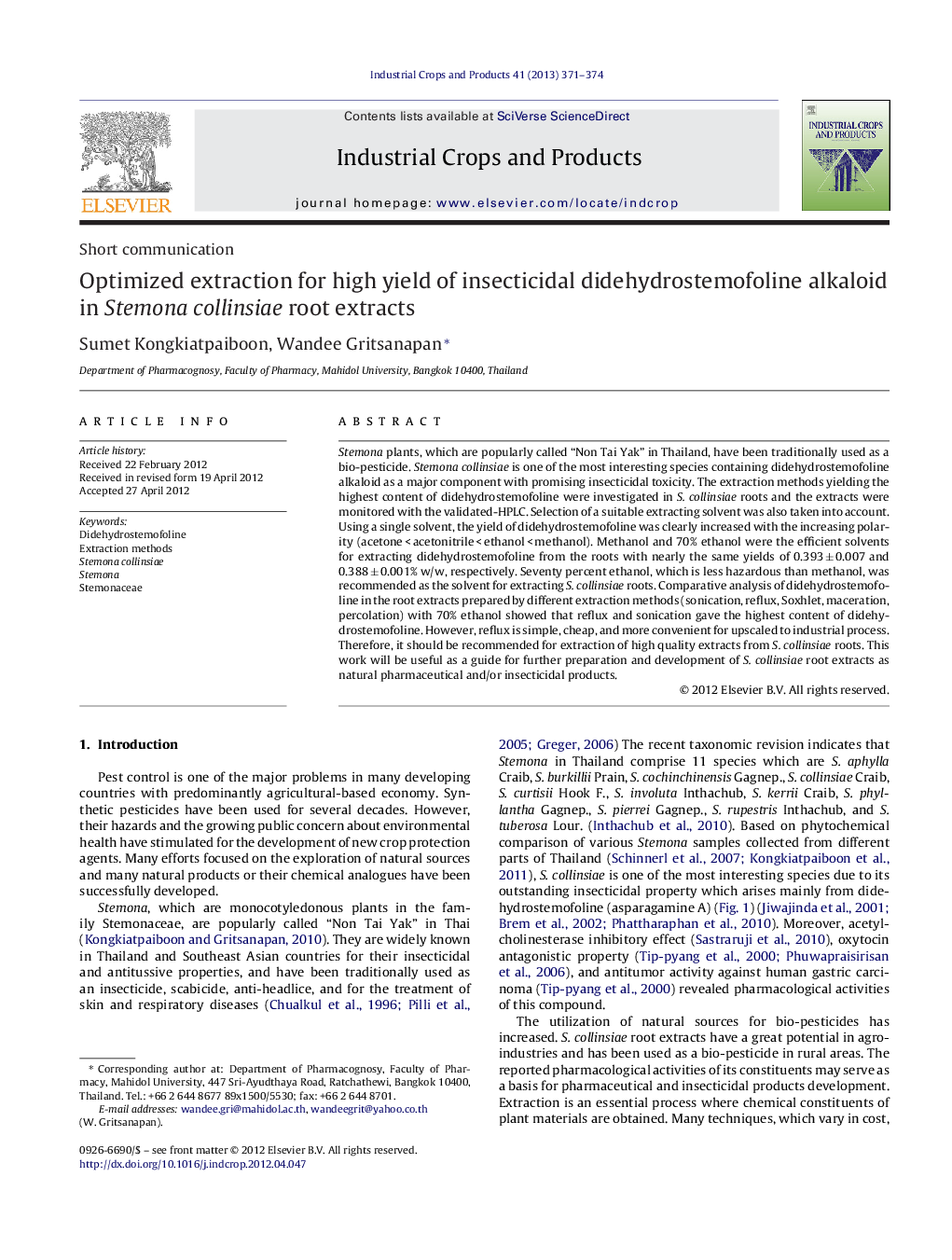| Article ID | Journal | Published Year | Pages | File Type |
|---|---|---|---|---|
| 4513934 | Industrial Crops and Products | 2013 | 4 Pages |
Stemona plants, which are popularly called “Non Tai Yak” in Thailand, have been traditionally used as a bio-pesticide. Stemona collinsiae is one of the most interesting species containing didehydrostemofoline alkaloid as a major component with promising insecticidal toxicity. The extraction methods yielding the highest content of didehydrostemofoline were investigated in S. collinsiae roots and the extracts were monitored with the validated-HPLC. Selection of a suitable extracting solvent was also taken into account. Using a single solvent, the yield of didehydrostemofoline was clearly increased with the increasing polarity (acetone < acetonitrile < ethanol < methanol). Methanol and 70% ethanol were the efficient solvents for extracting didehydrostemofoline from the roots with nearly the same yields of 0.393 ± 0.007 and 0.388 ± 0.001% w/w, respectively. Seventy percent ethanol, which is less hazardous than methanol, was recommended as the solvent for extracting S. collinsiae roots. Comparative analysis of didehydrostemofoline in the root extracts prepared by different extraction methods (sonication, reflux, Soxhlet, maceration, percolation) with 70% ethanol showed that reflux and sonication gave the highest content of didehydrostemofoline. However, reflux is simple, cheap, and more convenient for upscaled to industrial process. Therefore, it should be recommended for extraction of high quality extracts from S. collinsiae roots. This work will be useful as a guide for further preparation and development of S. collinsiae root extracts as natural pharmaceutical and/or insecticidal products.
Graphical abstractFigure optionsDownload full-size imageDownload as PowerPoint slideHighlights► Stemona collinsiae roots, a potential natural pesticide resource, contain didehydrostemofoline as a major active component. ► Methanol and 70% ethanol were the efficient solvents for extracting didehydrostemofoline from the S. collinsiae roots. ► Refluxing with 70% ethanol was the recommended method and solvent for extracting S. collinsiae roots with high yield of didehydrostemofoline.
